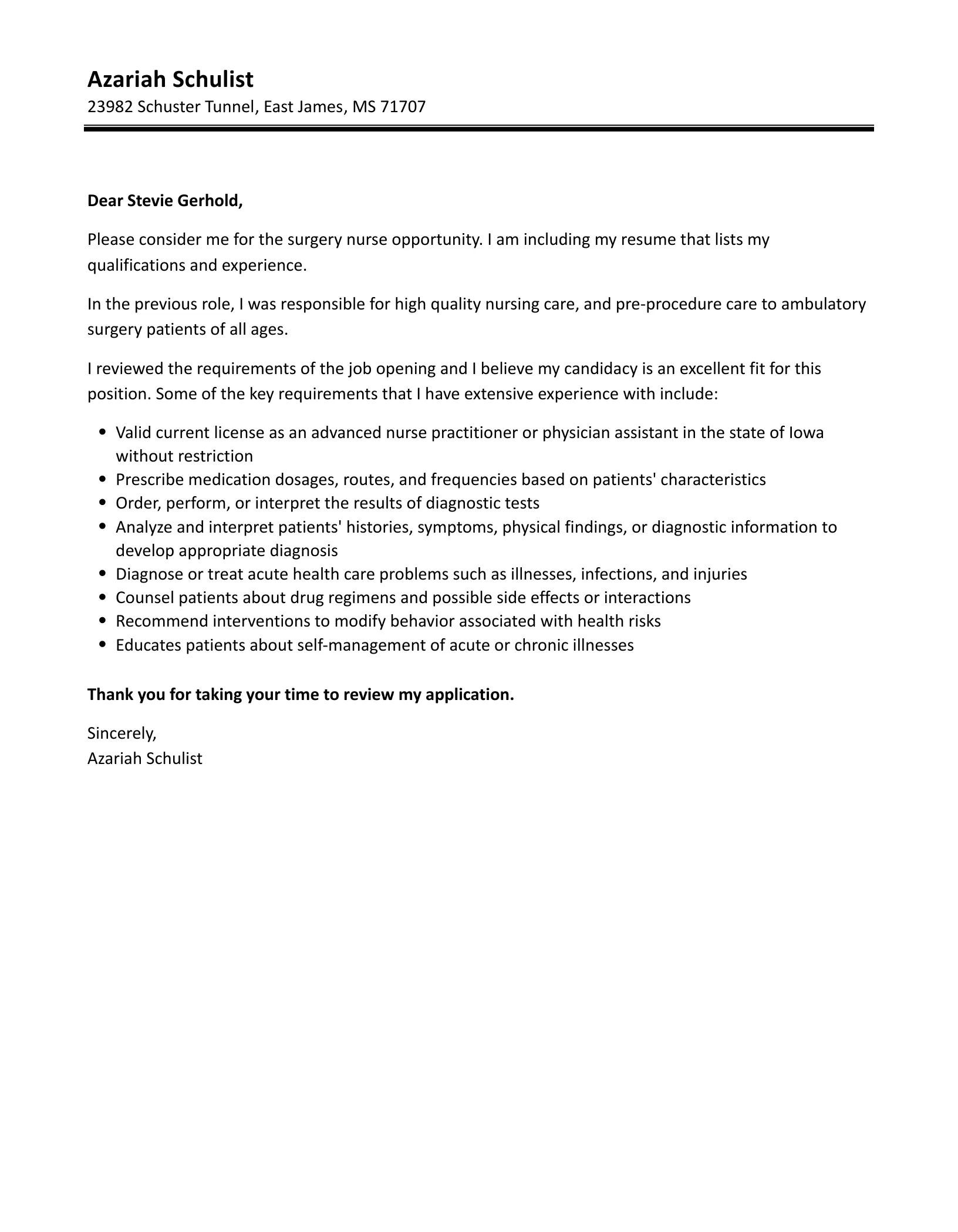Crafting a Powerful Surgery Cover Letter
A well-crafted surgery cover letter is crucial when applying for positions in the medical field. It’s not just a formality; it’s your first impression and an opportunity to distinguish yourself from other candidates. A strong cover letter demonstrates your understanding of the role, your passion for surgery, and your ability to communicate effectively. This guide will help you create a cover letter that grabs attention and helps you get hired. This step-by-step guide will help you create a surgery cover letter that stands out and lands you the job you desire. The importance of a good cover letter cannot be overstated in today’s competitive job market. A well-written surgery cover letter can significantly increase your chances of securing an interview and ultimately, the job. It gives you the chance to make a strong first impression and demonstrate your skills, experience, and enthusiasm for the role.
Understanding the Purpose of a Cover Letter
The primary purpose of a surgery cover letter is to introduce yourself and express your interest in a specific job. It allows you to provide context to your resume, highlighting relevant skills and experiences that align with the job requirements. It should tell the hiring manager why you’re a great fit for the role and what you can bring to the table. Unlike a resume, a cover letter lets you show your personality and enthusiasm. It’s your chance to make a personal connection with the reader and leave a lasting impression. A great cover letter is about more than just listing your qualifications; it is about telling your story. It explains how your career goals align with the hospital’s mission and the specific requirements of the job. It shows the hiring manager why you are the perfect person for the job and why they should take your application seriously.
Highlighting Your Skills and Qualifications
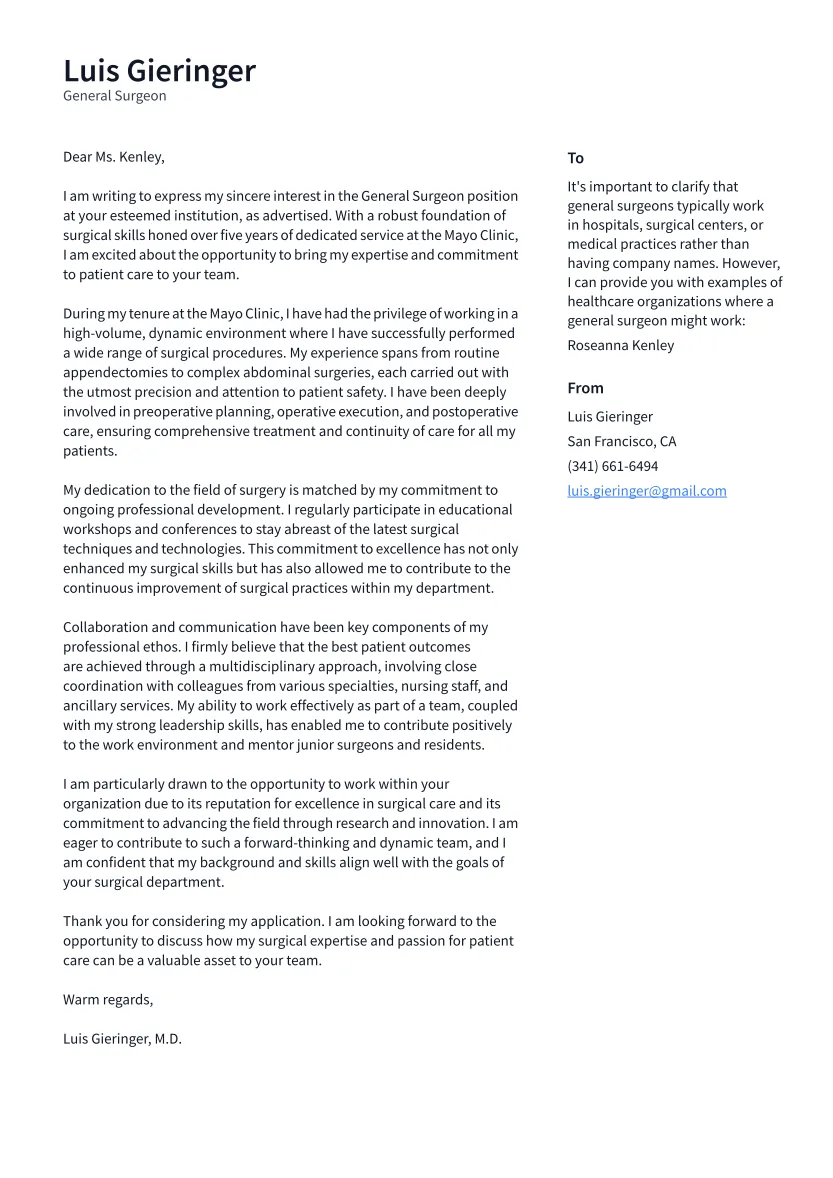
Your cover letter should clearly showcase your skills and qualifications related to surgery. Focus on experiences and achievements that demonstrate your competence and suitability for the role. This is your chance to highlight relevant skills, such as surgical techniques, patient care, and leadership abilities. Quantify your achievements whenever possible. Instead of saying you ‘managed’ a team, explain how you improved efficiency or patient outcomes. Mention any specializations, certifications, or research experience that would set you apart. Always tailor your skills to meet the needs of the job description, highlighting the skills and expertise most relevant to the position. Provide concise examples of how you have applied these skills in the past and the positive outcomes that resulted from your actions. This ensures that your cover letter is both informative and compelling.
Researching the Hospital or Clinic
Before you write your cover letter, it’s essential to research the hospital or clinic you’re applying to. Understand their mission, values, and recent achievements. This research allows you to tailor your cover letter, demonstrating your genuine interest and your alignment with their goals. Visit their website, read their annual reports, and check out any news articles or social media posts. Show that you have taken the time to understand what they are looking for in a candidate. Demonstrate your knowledge of the organization and your enthusiasm for the role. The more you know about the hospital or clinic, the better you can tailor your cover letter to make a positive impression. Being informed shows you’re serious about the opportunity and are willing to put in the effort.
Tailoring Your Cover Letter to the Job
Customize your cover letter for each job application. Generic cover letters often fail to make an impact. Review the job description carefully and identify the key requirements, skills, and experiences the employer is seeking. Then, highlight those elements in your letter, providing specific examples of how you meet those requirements. Use the same keywords and phrases that appear in the job description. This will help your application pass through applicant tracking systems (ATS) and catch the attention of the hiring manager. Tailoring your cover letter shows the employer that you are truly interested in the specific position and that you have taken the time to understand the job’s requirements. It significantly increases your chances of getting noticed and considered for an interview.
Key Components of a Surgery Cover Letter
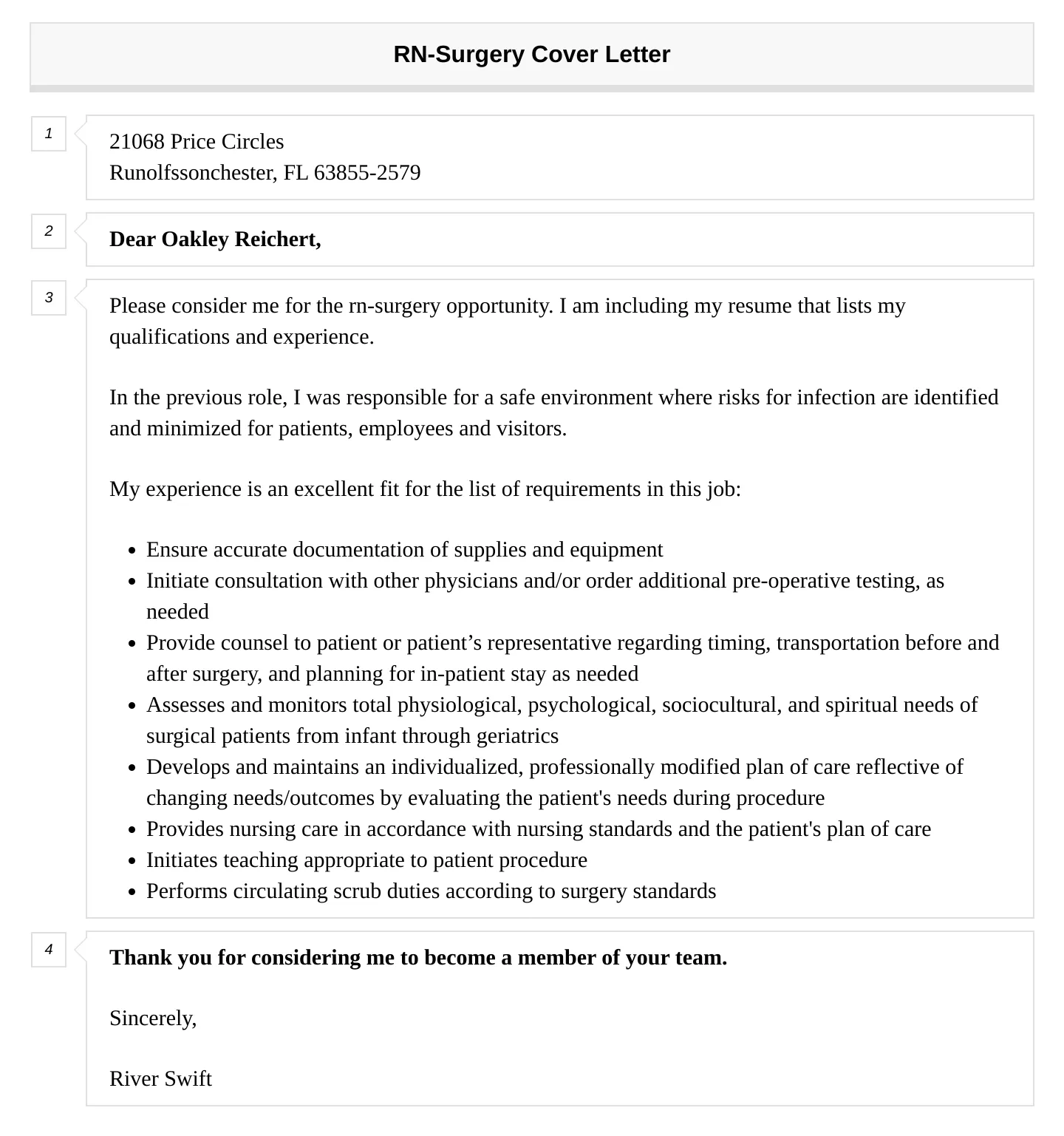
Contact Information and Salutation
At the top of your cover letter, include your contact information, such as your name, phone number, email address, and LinkedIn profile URL. If you know the hiring manager’s name, use it in the salutation (e.g., ‘Dear Dr. Smith’). If not, use a professional greeting such as ‘Dear Hiring Manager’ or ‘Dear [Department Name] Hiring Committee.’ This sets a professional tone from the beginning. Providing accurate contact information is essential for the employer to reach you for an interview or follow-up. Using the hiring manager’s name demonstrates that you have researched the company and that you’re personalizing the application. This simple step makes a significant impact and increases your chances of getting a positive response.
Professional and Enthusiastic Tone
Maintain a professional and enthusiastic tone throughout your surgery cover letter. Use clear, concise language and avoid jargon or overly complex sentences. Your tone should convey your passion for surgery and your commitment to providing excellent patient care. Show your interest in the position and the organization. Be positive and confident in your abilities. Remember that your cover letter is a reflection of your personality and professionalism. Keep the tone positive, and demonstrate that you are excited about the job opportunity and eager to learn more about the hospital or clinic. Demonstrate your enthusiasm through your word choice and writing style.
Opening Paragraph Attracting Attention
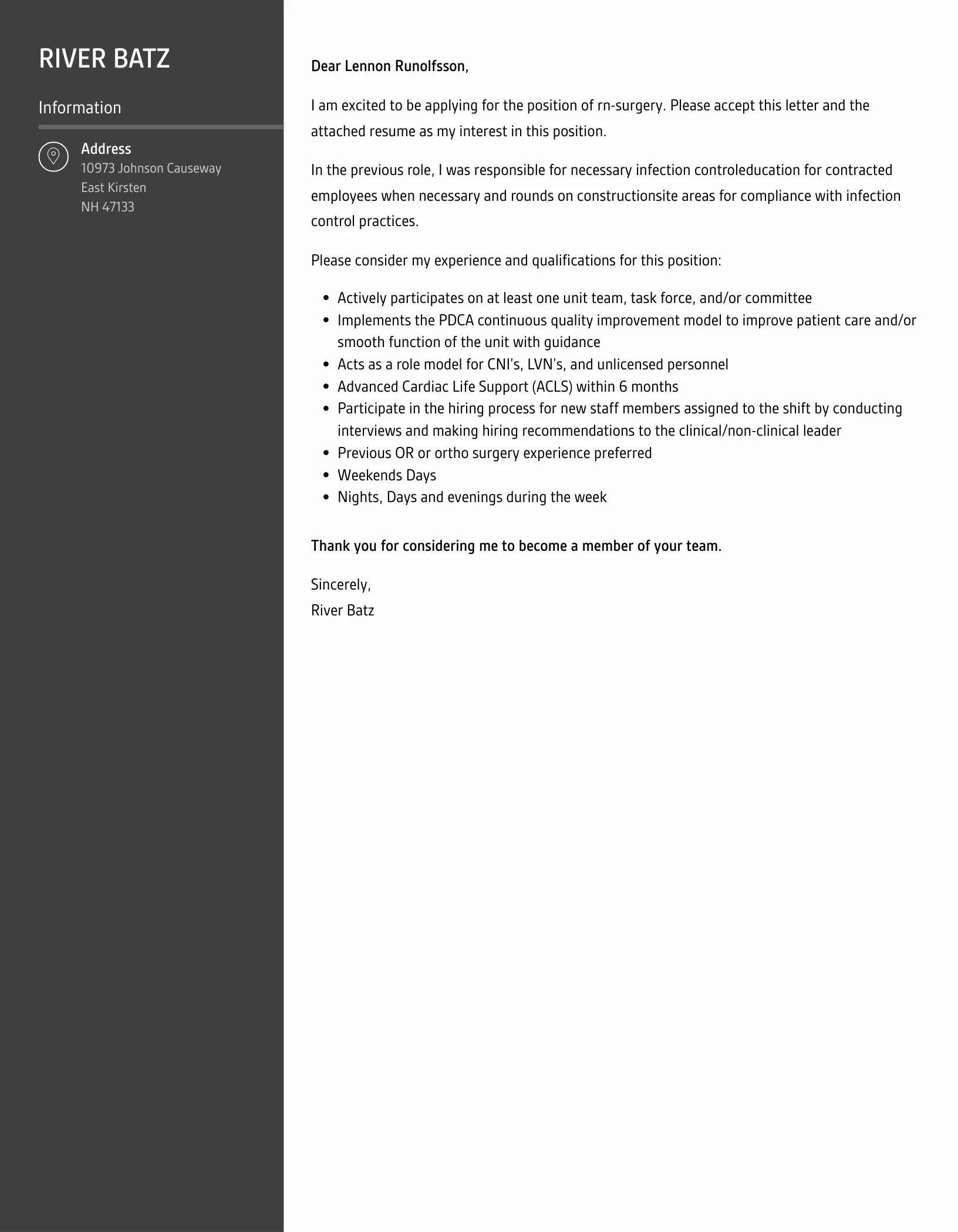
The opening paragraph is critical. It’s your first opportunity to capture the reader’s attention and make them want to read the rest of your letter. State the position you are applying for and how you learned about it. Briefly mention your most relevant qualifications or accomplishments, and express your enthusiasm for the opportunity. You want to hook the reader from the first sentence. This is also where you can highlight your unique skills and explain why you are the perfect candidate for the job. This first impression is crucial, so make sure your opening is engaging and memorable.
Body Paragraphs Showcasing Experience
The body paragraphs should provide details about your experience, skills, and achievements. Use specific examples to illustrate your abilities and provide evidence of your success. Connect your experiences with the requirements of the job description, showing how your skills align with what the employer is seeking. Be clear and concise, focusing on the most relevant aspects of your background. Use strong action verbs to describe your accomplishments and quantify your achievements whenever possible. Use the STAR method (Situation, Task, Action, Result) to structure your examples, ensuring they are compelling and easy to understand.
Quantifying Your Achievements
Whenever possible, quantify your achievements to demonstrate your impact. Instead of saying ‘Improved patient outcomes,’ say ‘Increased patient recovery rates by 15%.’ Use numbers, data, and statistics to support your claims. This adds credibility to your cover letter and provides concrete evidence of your abilities. Quantifying your achievements shows that you are results-oriented and that you can make a tangible difference in a healthcare setting. When quantifying your accomplishments, be precise and accurate. This not only makes your cover letter more compelling but also shows that you are detail-oriented and focused on achieving measurable results.
Closing with a Call to Action
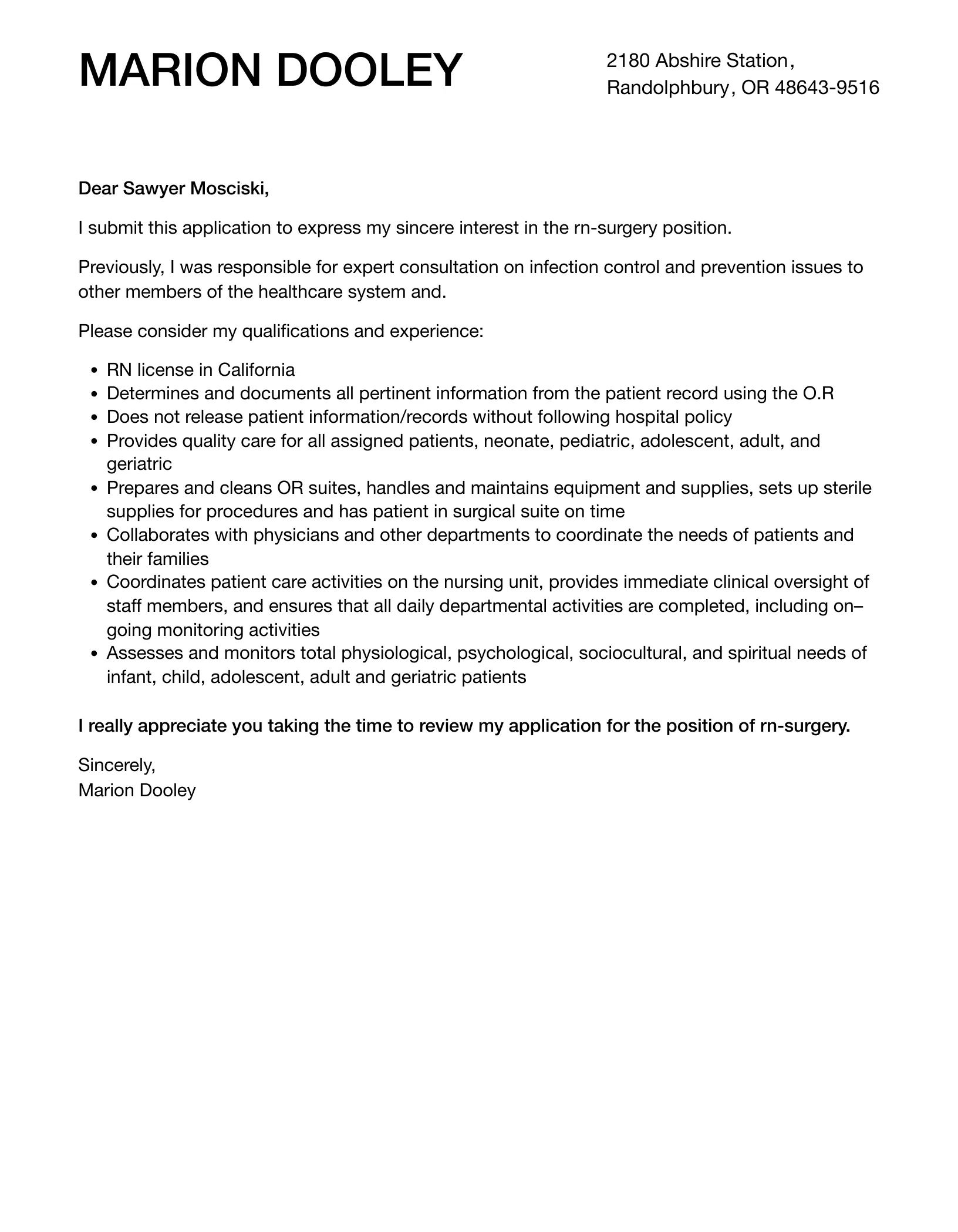
In your closing paragraph, reiterate your interest in the position and thank the reader for their time and consideration. Include a call to action, such as ‘I am eager to discuss my qualifications further’ or ‘I welcome the opportunity to interview for this position.’ Provide your contact information again, just in case. Be confident and express your enthusiasm for the opportunity. This reinforces your interest and leaves a lasting positive impression. Make sure your closing is professional and shows your eagerness to move forward in the hiring process.
Formatting and Proofreading Your Cover Letter
Choosing a Professional Font and Layout
Use a professional and readable font, such as Times New Roman, Arial, or Calibri. Keep the font size between 10 and 12 points. Maintain a clean layout with consistent margins and spacing. Use bullet points to highlight key skills or achievements, making the letter easier to read. Ensure that the formatting is consistent throughout the document. The formatting of your cover letter is an important factor to consider. A well-formatted cover letter is easier to read and creates a positive impression. Consistent formatting and a clear layout show that you pay attention to detail, which is crucial in the medical field.
Ensuring Error-Free Writing
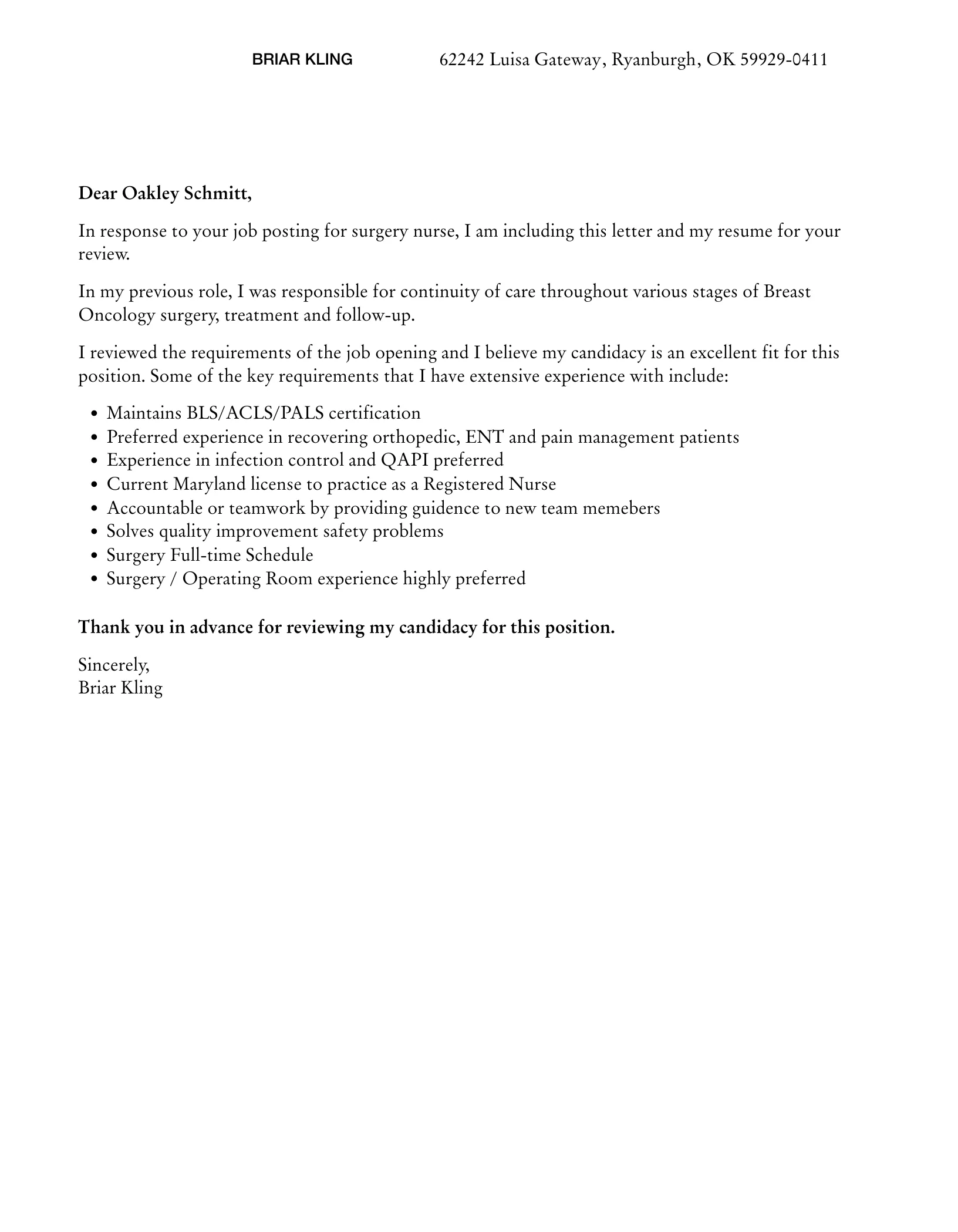
Proofread your cover letter carefully for any grammatical errors, spelling mistakes, or typos. Errors can damage your credibility and suggest a lack of attention to detail. Always use a grammar checker and spell-checker. It’s a good idea to have someone else review your cover letter to catch any mistakes you might have missed. A clean, error-free cover letter shows that you are professional and competent. Be sure to check the names of people and organizations. Errors in those details demonstrate that you haven’t paid attention to the details.
Using Keywords Effectively
Integrate relevant keywords from the job description naturally throughout your cover letter. This helps applicant tracking systems (ATS) identify your application as a match and also demonstrates your understanding of the role. Don’t overdo it. The focus should always be on clear communication and showcasing your skills. Your cover letter should be easy to read and should avoid sounding like it was keyword-stuffed. The strategic use of keywords ensures that your cover letter is both effective and easy to read.
Submitting Your Cover Letter
Following Application Instructions
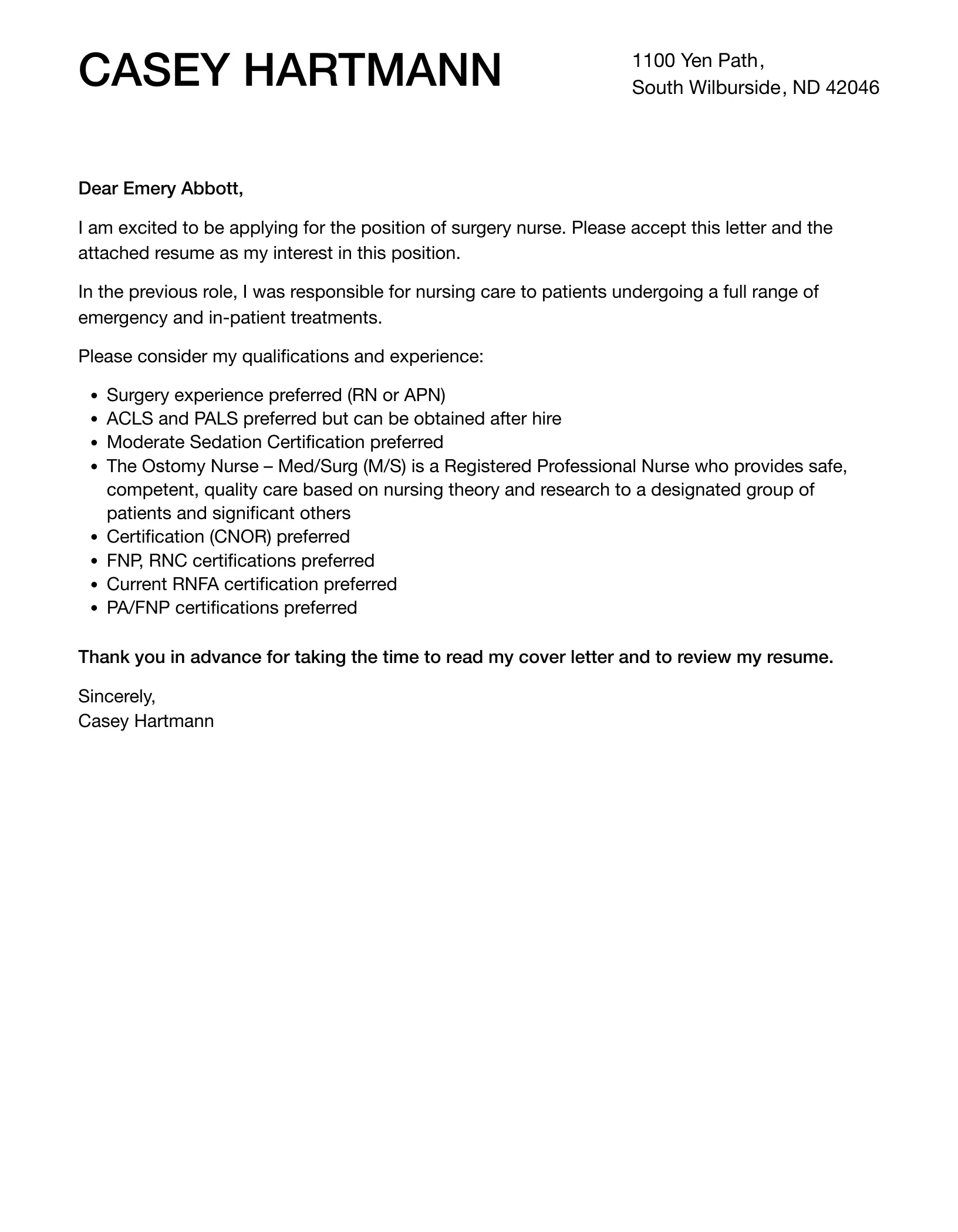
Carefully follow the application instructions provided by the hospital or clinic. Ensure that you submit your cover letter and resume in the required format and through the designated channels. Check the application deadline and submit your application well in advance. Missing deadlines or submitting the wrong documents can result in your application being rejected. Pay close attention to all instructions to increase your chances of landing the job. Double-check everything to ensure you haven’t missed anything.
Preparing for Potential Follow-Up
Be prepared for a potential follow-up. Monitor your email and voicemail for any communications from the hiring manager. If you are contacted for an interview, be prepared to discuss your qualifications and answer any questions about your experience and skills. Review your cover letter and resume before the interview. Preparing for follow-up shows that you are interested and professional. Prepare any questions you would like to ask the interviewer. Being ready for the next step in the process is just as important as submitting a good cover letter and resume.
